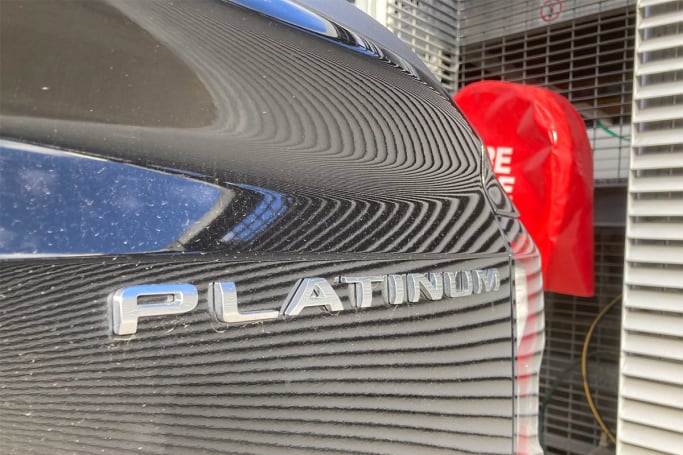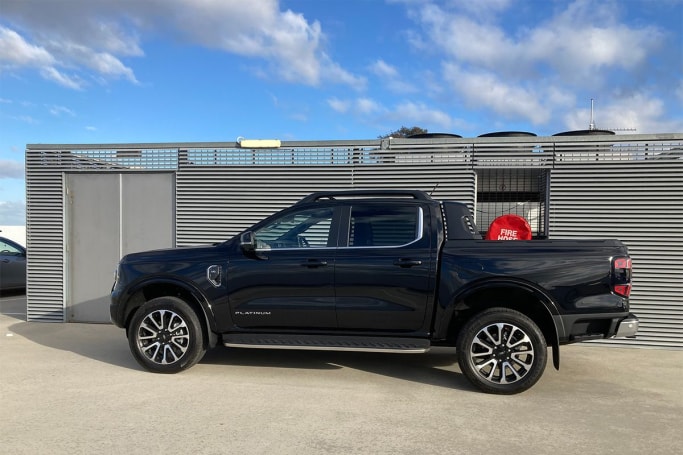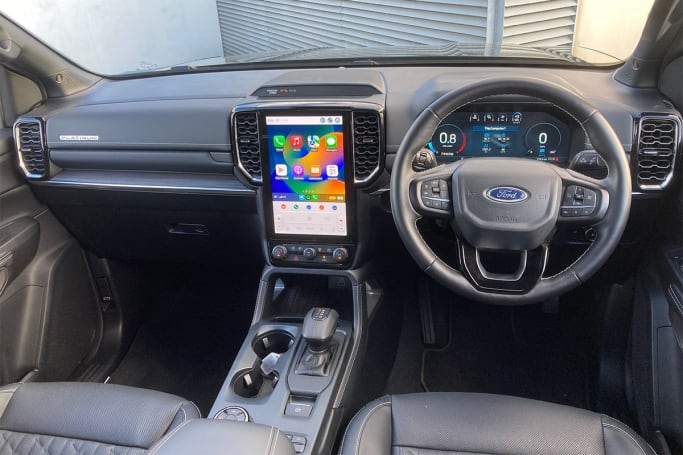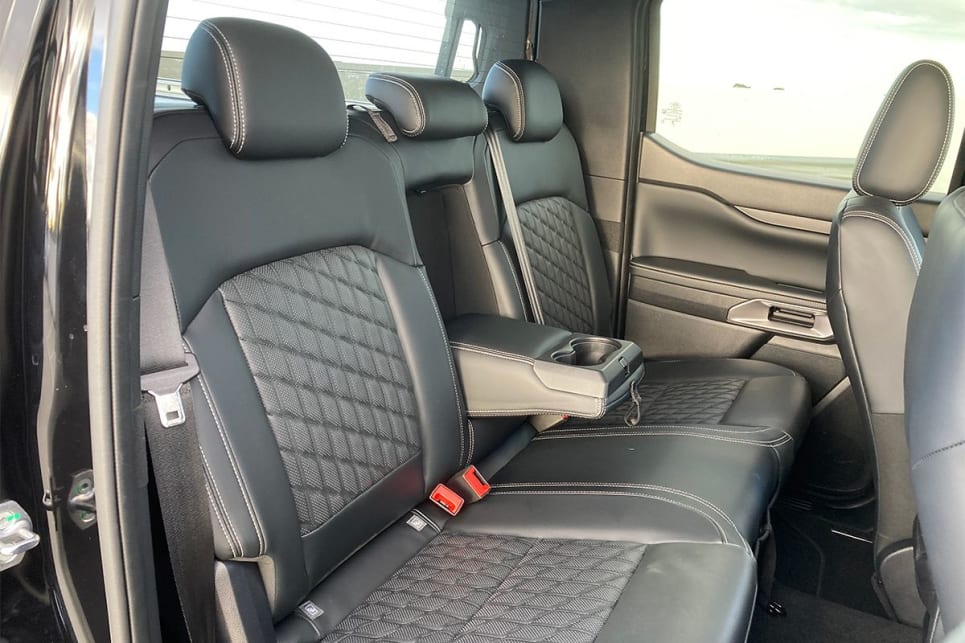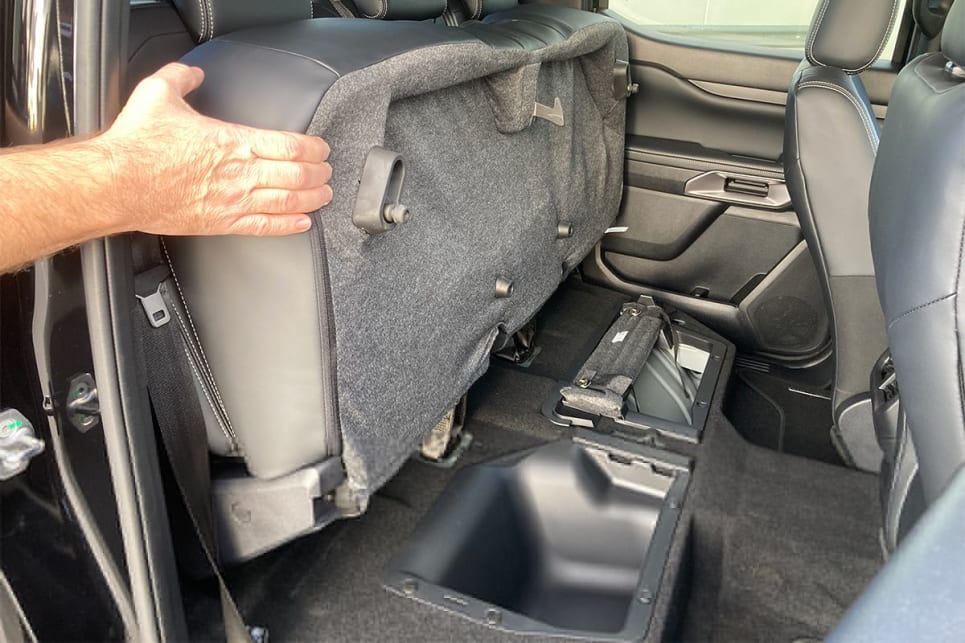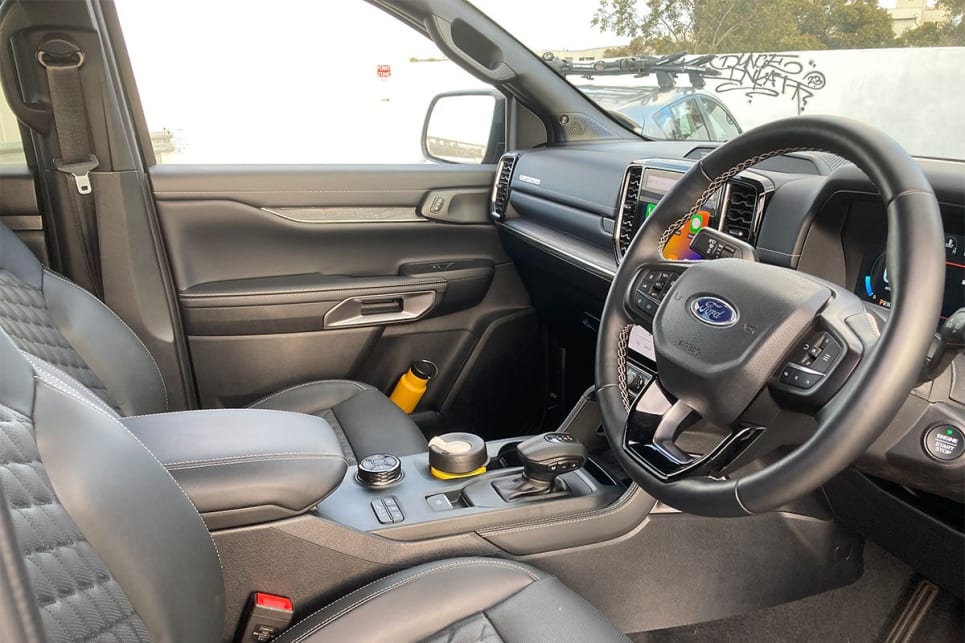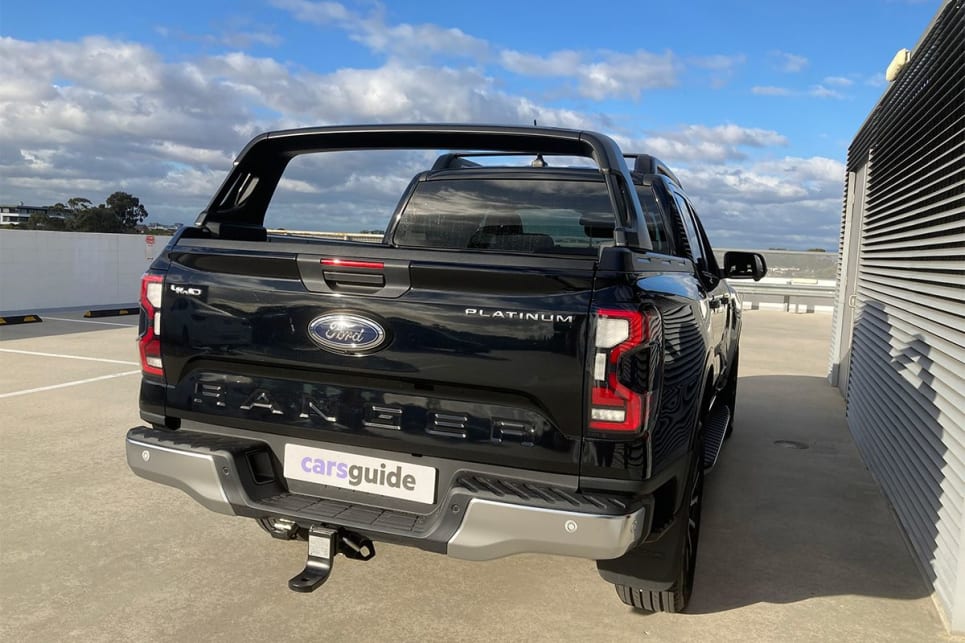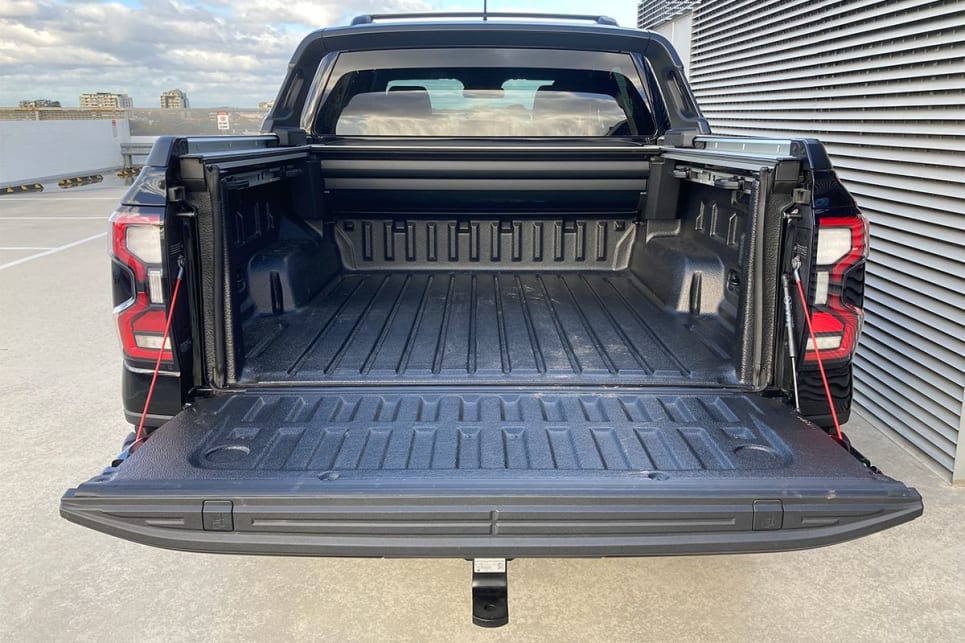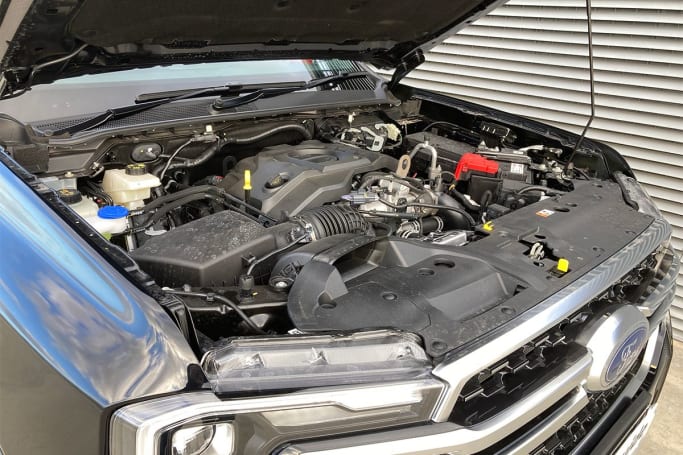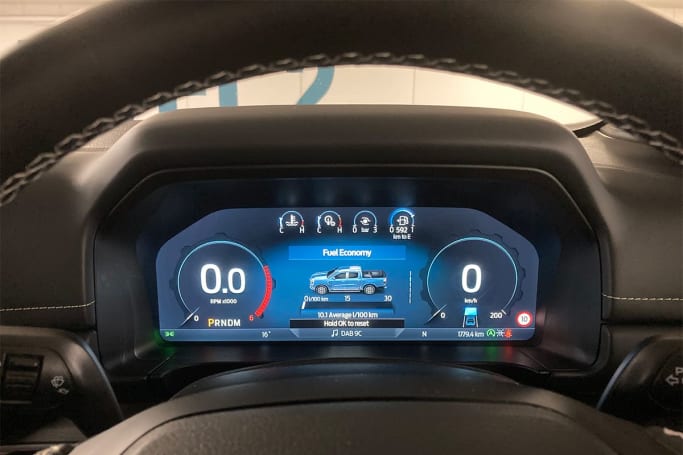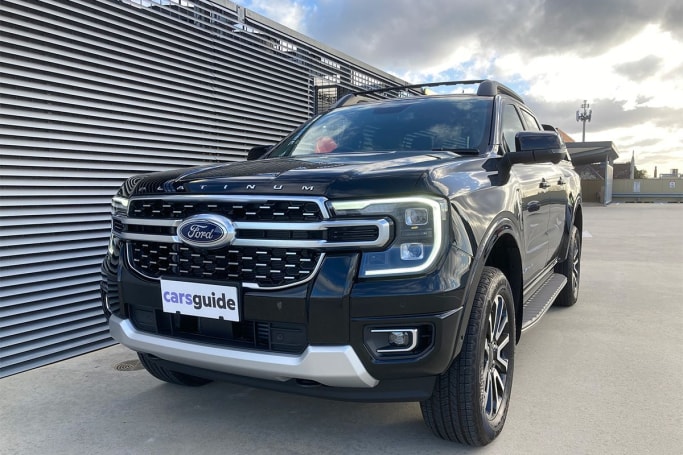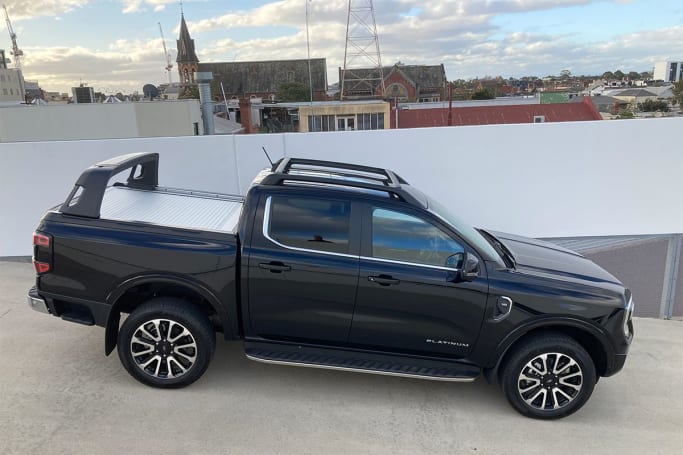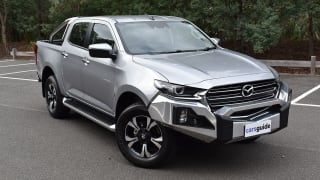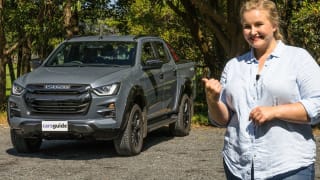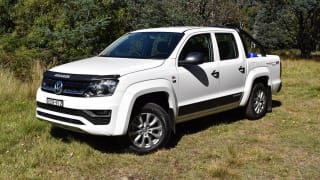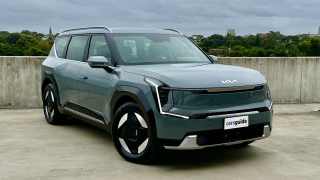The super Ranger lives up to its name by kicking off from a super eye-watering $78,190, before on-road costs.
That’s nearly $6000 more than the Wildtrak V6 diesel, though nigh-on $10K cheaper than the V6 twin-turbo petrol-powered Raptor. At least this version looks the part.
And the Ranger Platinum does come with its own special features.
Ford has gone down a very-American luxury-car makeover route, so there is the showy ‘Silk Chrome’ grille, fancy Matrix LED headlights that can see through corners, 20-inch alloy (though with no additional wheel arch flares), a new bronze metallic choice and a no-added-cost black roof option to help your neighbours think you’ve bought the Fairlane of Rangers – though that paint effect is lost on our all-black test vehicle.

Furthermore, the Platinum scores a much-wider digital instrument cluster (12.4 inches, like the Raptor’s), cooled as well as heated front seats (with memory setting for the driver), a toasty steering wheel, pre-installed auxiliary switch panel for accessories, 10-speaker premium audio and pleated leather trim to help swish things up inside.

Out back, the tailgate has a classy soft-drop-open action, while there’s a segment-first slidable tub rack system for long roof loads, as well as roof rails with nifty swinging roof racks. That’s quite a spec upgrade.
But is it $6K’s worth, since the cheaper Wildtrak also scores the Platinum’s electric front seats (but minus the memory), along with its 12-inch central touchscreen, ambient lighting, adaptive cruise control, a trailer brake controller, powered roller shutter, zone surround lighting, 360-degree camera, auto park-assist, pull-out dash-end cupholders and side steps?
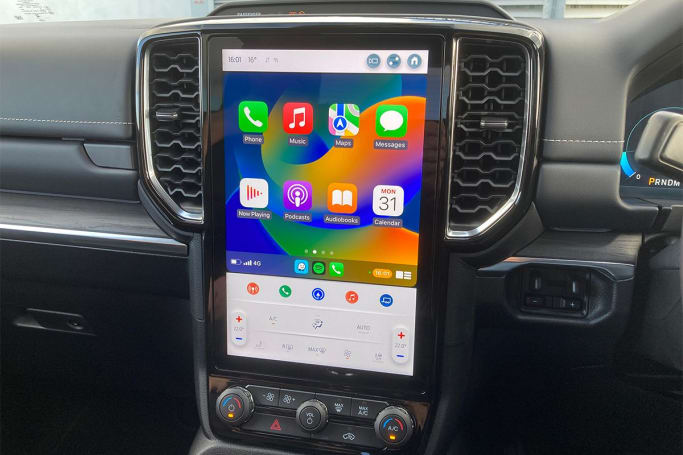
Never mind. The extra kit comes on top of the keyless entry and start, dual-zone climate control, sat-nav, leather-wrapped steering wheel, wireless smartphone charger, traffic-sign recognition tech and an Off-Road screen displaying 4WD activation and related settings.
And, like all Ranger dual-cab models, the Platinum’s safety is impressive, offering a raft of driver-assist tech. More on all that in the safety section.
About the only obvious omission is a sunroof. Do utes even come with those? And possibly a gold-plated nudge bar with new gen Ford Ranger in LEDs!
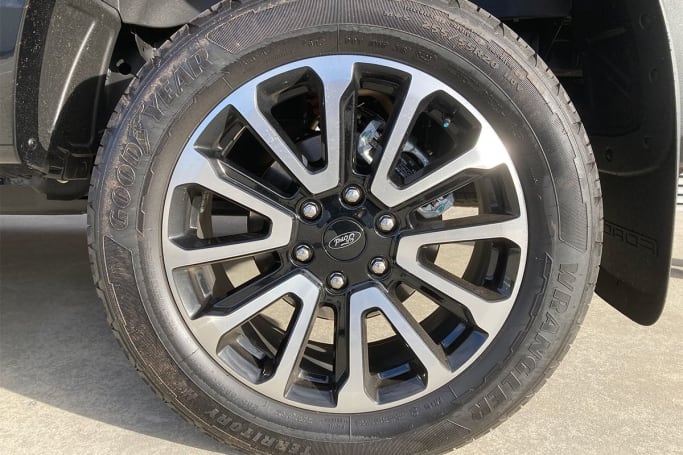
Is Platinum good value or not then? Objectively, no, because it is so expensive.
But, subjectively, you need to consider that the Ranger’s considerable feel-good factors, from the evocative Tonka Truck styling and interior’s comfort, space and functionality, to the promise of off-road adventure. And that’s not taking in the pride as the sole Australian-designed and engineered vehicle (along with Everest). These are premiums worth paying for, if you can afford them.
So, we get it: Wildtrak for action, Platinum for sophistication. Two sides of the same Ranger coin.



